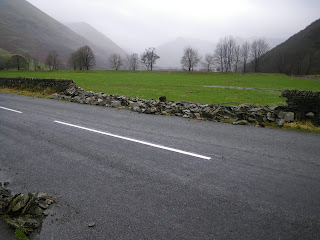High Lickbarrow Farm.
High Lickbarrow Farm, near Windermere, has been bequeathed to the National Trust by Mr Michael Bottomley who sadly died last January.
The Gateway to the front garden seen from the front door.
Fine topiary work on yew and box leading up to the front door of the farmhouse.
The farm is home to the Scout Beck herd of Albion cattle. This herd was founded by Michael Bottomley's late sister, Libby.
It is not entirely certain as to whether the breed became extinct during foot and mouth epidemics and was re-established later or was preserved during these times.
The Albion Cattle Society are..."dedicated to raising public awareness of this dying breed and help save it from extinction".
Ongoing work at this unique farm includes tidying up the 'cottage garden'.....
Before...
during...
and, well it's a work in progress!
'Lopping' back the undergrowth to locate...
....the septic tank. We get all the best jobs!
Kim has worked really hard to improve the front garden.
Lots of work still to do... but it's a start.





























